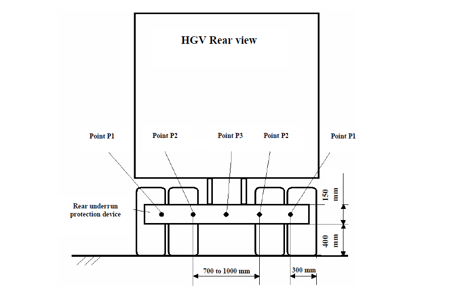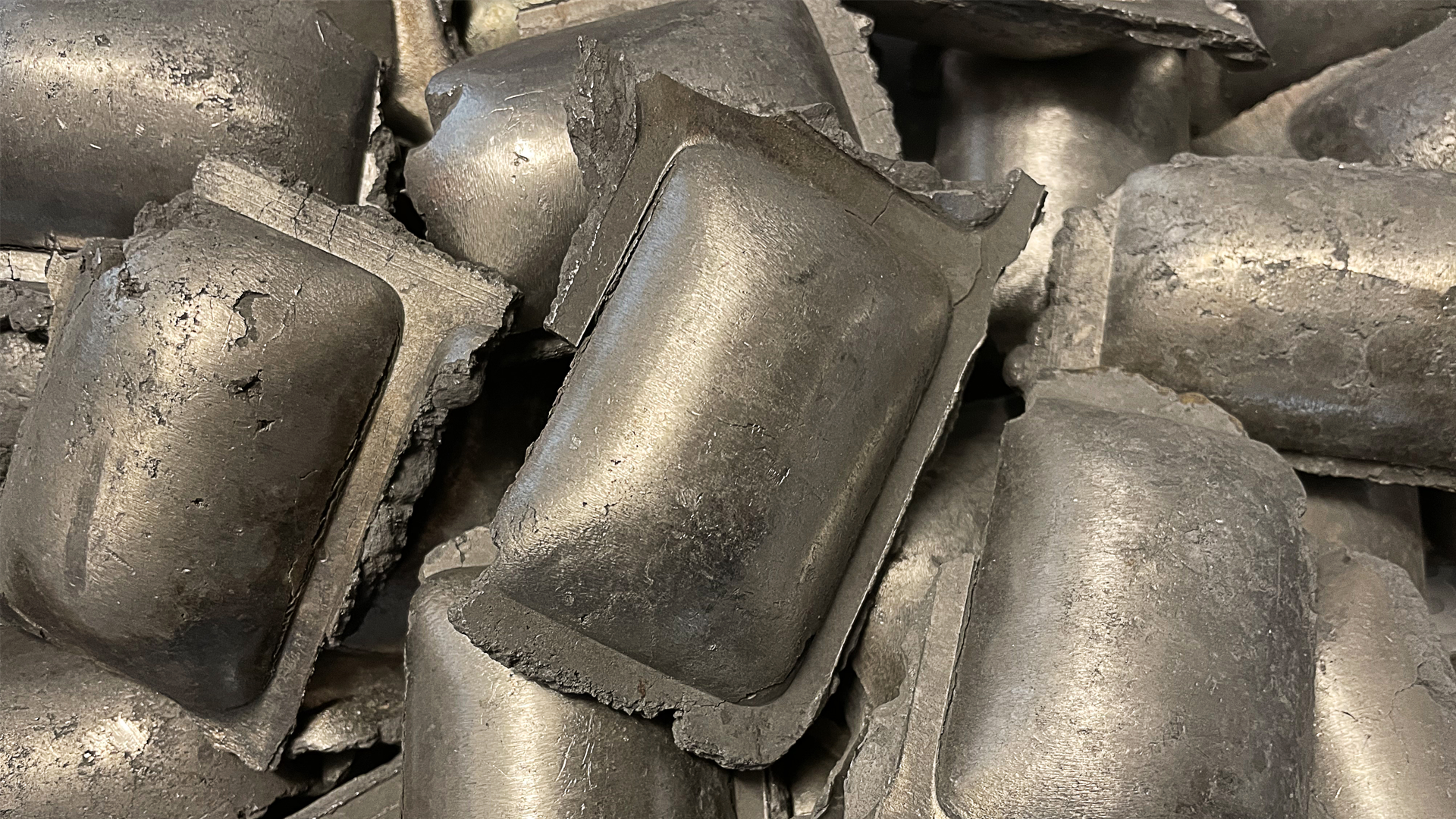Why is a new R58 regulation created?
The rationale behind changing the Regulation No. 58 (Rear Underrun Protection Devices) is based upon research studies and an overall Safety objective to reduce collision injuries.
At the 99th session of GRSG* Germany announced the submission of an official document for the 100th session of GRSG to significantly improve the situation of rear underrun accidents by introducing more demanding requirements for rear underrun protection devices (RUP) on heavy goods vehicles (HGV).
The target is to ensure a higher level of safety for passenger car occupants, who have a high risk to get severely or fatally injured in case of hitting the rear of a truck or trailer.
The change includes:
- higher force requirements
- reduced ground clearance
- increased section height of the cross-member of the RUP
Analyses of accident statistics in Germany indicate that the level of protection for the occupants of cars in case of an impact against the end of a heavy goods vehicles is not sufficient. For the years 2002 to 2008 approximately 1.400 accidents with injuries to persons occured, where a car runs into the rear of a heavy goods vehicle. For this period per average 39 occupants died per year and 368 occupants were severely injured.
Most of the accidents of a car hitting the rear of a HGV resulting in fatally and severely injured occupants occur on motorways, involving mainly HGV with a mass of more than 12 tons and especially articulated trucks.
The problem is the effect that the car is under-riding the rear of the HGV which leads to massive deformation of the passenger car. Very often the frontal crash structures in a car are not activated leading to structural deformation up to the A-pillar which results in injuries to the car occupants.
The proposed and approved amendments derive from analyzing various research activities in the European Community, standardization activities in Canada, accident data analysis and research tests.
For the reduced ground clearance and the increased section height of the cross-member the findings of the European research project VC-Compat on rear underrun protection devices were the basis for the proposal. The project made an investigation on the height of the main frontal crash structures of cars and the height of structures of the underrun protection devices on the rear of trucks and trailers. One of the project recommendations was to reduce the ground clearance of the RUP to 400 mm and to increase the section height of the cross-member to 200 mm.
Document GRSG/2011/19 proposed a ground clearance of 450 mm for automatic leveling suspension systems (pneumatic, hydraulic, hydropneumatic) and 500 mm for suspension systems without automatic leveling. Both measurements are taken when the vehicle is unladen. Under fully loaded condition, the ground clearance will be reduced to approximately 400 to 420 mm for both suspension types. This will perfectly match the frontal crash structures of cars that are in most cases located in an area of 406 to 508 mm ground clearance, also named “Part 581 zone” (FMVSS standard in the US). For this investigation of the geometry of frontal car structures, 55 vehicles representing 61 % of the European sales numbers in 2003 have been measured.
It is also proposed to increase the section height of the cross-member of a RUP up to 150 mm replacing the current height of 100 mm. This leads to advantages for the geometric match of the car front structures and the RUP in case of braking maneuvers of the impacting vehicle.
As most of the relevant accidents of this rear underrun scenario occur on motorways, an analyses of the German In-Depth Accident Study (GIDAS) was conducted looking at different parameters but especially the impact speed which is important to get information about the force levels during the impact.
Four main scenarios were found:
Scenario 1
- Truck velocity before collision: 0 km/h
- Car velocity before collision: 20 km/h
- No under-ride situation
Scenario 2
- Truck velocity before collision: 0 km/h
- Car velocity before collision: 50 to 70 km/h
- Under-ride situation
Scenario 3
- Truck velocity before collision: 40 to 60 km/h
- Car velocity before collision: 80 to 100 km/h
- Under-ride situation
Scenario 4
- Truck velocity before collision: 80 km/h
- Car velocity before collision: 120 km/h
- Under-ride situation
The investigation of each case ended with the conclusion that most of the relevant accidents (scenario 2, 3 and 4) show a difference in velocity between the impacting car and the HGV of 40 to 45 km/h.
To have an indication of the force levels during the impact dynamic four tests with 100 % overlap were performed with two vehicle types of the categories small and medium family cars at a test speed of 35 km/h and 56 km/h with each vehicle. For the low speed test the maximum impact force reached 200 kN for the small vehicle and 490 kN for the medium size vehicle. At a speed of 56 km/h the force level went up to 370 kN for the small and 715 kN for the medium size vehicle.
The assumption for the test loads to be applied at specific test points P1, P2 and P3 comes from the observation of the accident data showing that a vast majority of accidents happen with an overlap of less than 100 % of the car width.
Looking at the geometry of a truck or trailer, the maximum width allowed in the EC is 2.55 m.

Rear underrun protection device with test points
Reduce the numbers of road victims
Taking the width of 1.8 m for an average car shows that for the case of an overlap of less than 100 % only three test points or less on the cross-member of a RUP will be hit. To cover and withstand the forces applied by a car at a speed of approximately 40 to 45 km/h a total maximum force level of 380 kN is proposed for the three test points
P1, P2 and P3. The force levels to be applied at the three test points are as follows (GVW: Gross Vehicle Weight):
- P1: 50% GVW (max. 100 kN)
- P2: 85% GVW (max. 180 kN)
- P3: 50% GVW (max. 100 kN)
These force levels in combination with the reduced ground clearance of the RUP can ensure to hold cars back from under-riding the rear of a HGV and will therefore reduce the numbers of road victims significantly.
If you want to learn more how this can affect you in your business you can read VBG's presentation.
*The Working Party on General Safety (GRSG) is the subsidiary body of the World Forum for Harmonization of Vehicle Regulations (WP.29) within UNECE that prepares regulatory proposals on general safety to WP.29. This group of experts conducts research and analysis to develop general safety requirements for vehicles, in particular buses and coaches.
Recommended reading

Efficiency, Safety, and Sustainable Transport – Top 5 Articles and Insights of 2024

Transport Industry 2024: Great Progress Towards a Sustainable Future


